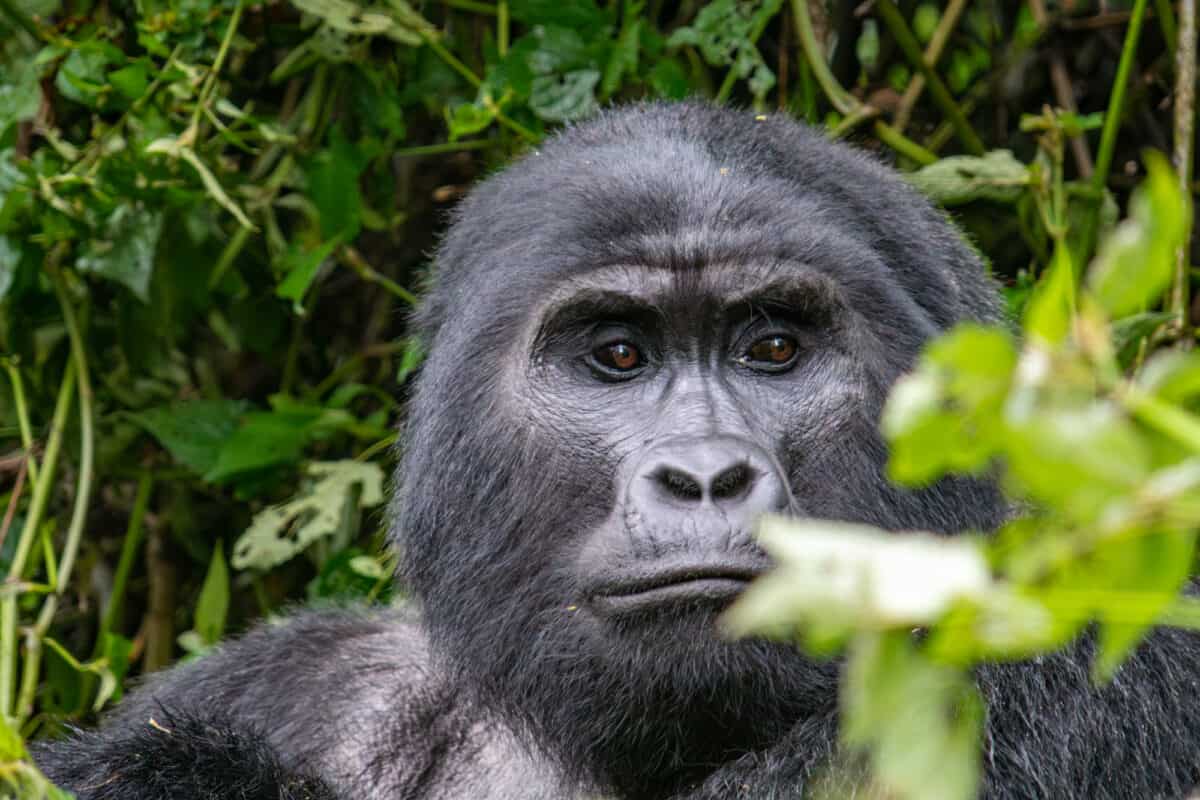Gorillas are the largest living primates on the earth. Interestingly, they are more similar to humans than you might expect – 98% of our DNA is the same as a gorilla’s DNA! However, our similarities extend beyond our DNA. Gorillas experience emotions such as joy, sadness, and even grief. Let’s learn more about these incredible animals.
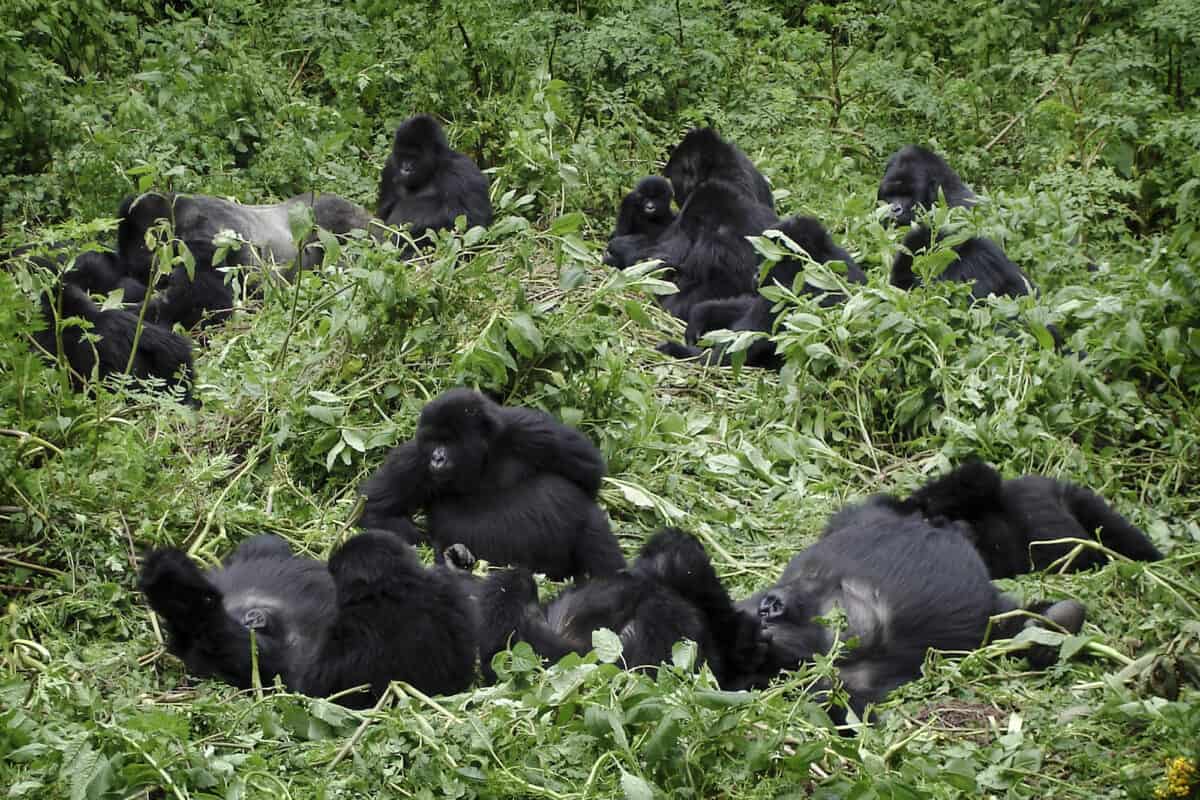
Some Quick “Animal” Facts
| Scientific Name | Gorilla beringei (Eastern Gorilla) / Gorilla gorilla (Western Gorilla) |
| Class | Mammalia |
| Size | Standing height of 4 to 6 feet when upright, weighing up to 440 pounds |
| Conservation Status | Critically Endangered (Eastern Gorilla) / Endangered (Western Gorilla) |
Gorilla Overview
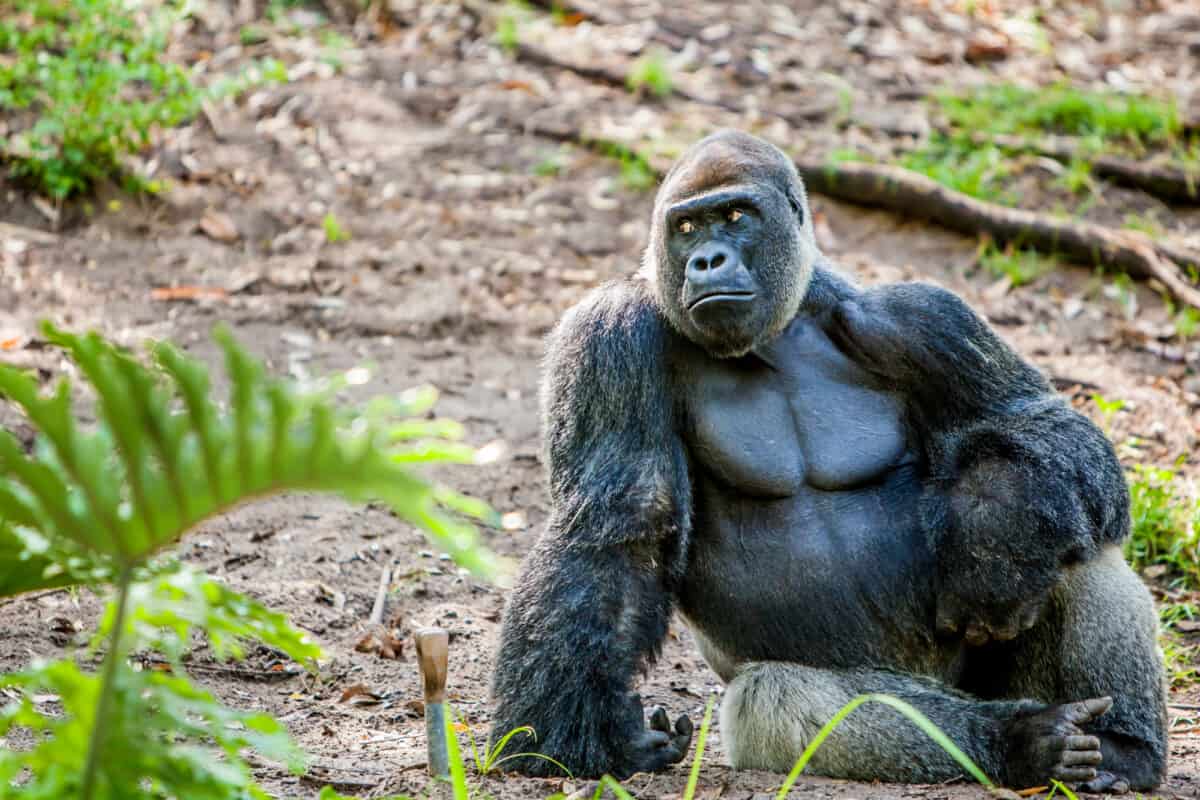
Where do they live?
Gorillas live in the forests and mountainous regions of central Africa. Countries such as Uganda, Rwanda, and Congo receive thousands of tourists each year who come to witness these incredible animals.
What do they eat?
Gorillas are primarily herbivorous. Eating mostly fruits, leaves, and a wide range of plants. However, they eat insects now and then.
How do they reproduce?
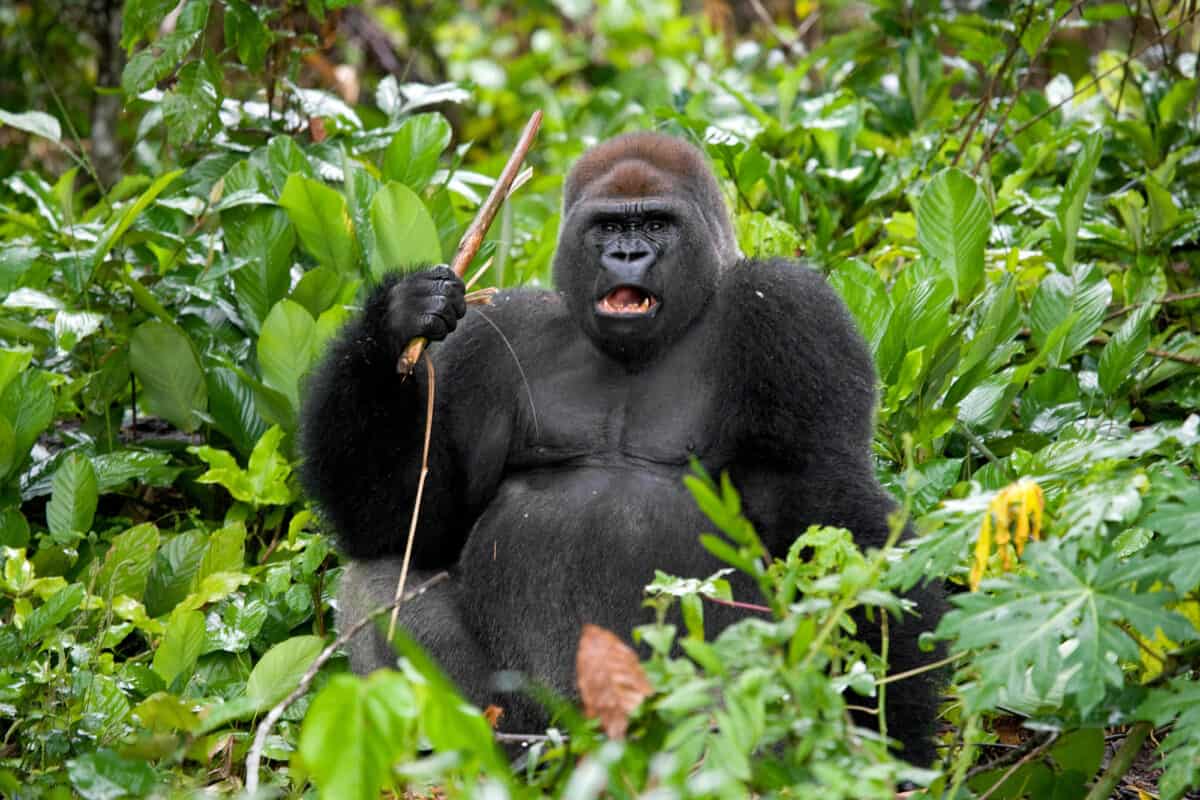
Gorillas have a slow reproduction rate, and like other mammals, they reproduce sexually and give live birth. After a gestation period of about 8.5 months, females give birth to only a single infant. The infants are cared for closely by their mothers and remain with them for several years.
Social behavior
Gorillas live in groups called troops or bands of between 5 to 30 gorillas. These groups are led by dominant males that are known as silverbacks. These dominant silverbacks are often at the head of the group for many years. The adult females in the troop generally compete with one another to groom or stay close to the silverback.
Gorilla News Tags
-

The Largest Gorilla Ever Captured on Video
-

Gorillas Don’t Like The Rain Either!
-

Gorilla Vs. African Forest Buffalo
-

Giant Gorilla Surprises Photographer
-

Silverback Gorilla Intervenes In a Fight Between Troop Members
-

When Mike Tyson offered a zookeeper $10,000 to open the gate to fight a Gorilla
-

Dwayne “The Rock” Johnson Vs. Silverback Gorilla
-

Gorillas Have Family Drama, Too
-

Gorilla vs. Eagle! Who Will Win?
-

Gorilla vs. Grizzly Bear – Who Would Win In A Faceoff?
-

Tiger Vs. Gorilla
-

Rare Images of a Gorilla Petting a Groundhog
Gorilla Conservation
Unfortunately, gorillas are facing the threat of extinction. Human activities such as habitat destruction and poaching are their biggest threats. Unfortunately, tourism is a double-edged sword as well because although it helps fund conservation practices, it puts the gorillas at risk. Humans can transmit diseases to them.
Conservation practices
| Habitat Preservation | Deforestation, mining, and agricultural expansion are threatening gorilla habitats. Conservation groups are working to secure protected areas and national parks to help protect their populations. |
| Anti-Poaching Measures | Unfortunately, gorillas are still being killed for bushmeat, and traditional medicine and taken for the illegal pet trade |
| Disease Control | To help manage diseases in gorilla populations, conservation measures include monitoring health and disease exposure. This includes vaccinating where possible and implementing measures to reduce human-gorilla contact. |
| Research and Monitoring | Long-term research helps conservationists understand threats and the effectiveness of different protection measures. |
Gorilla Pictures
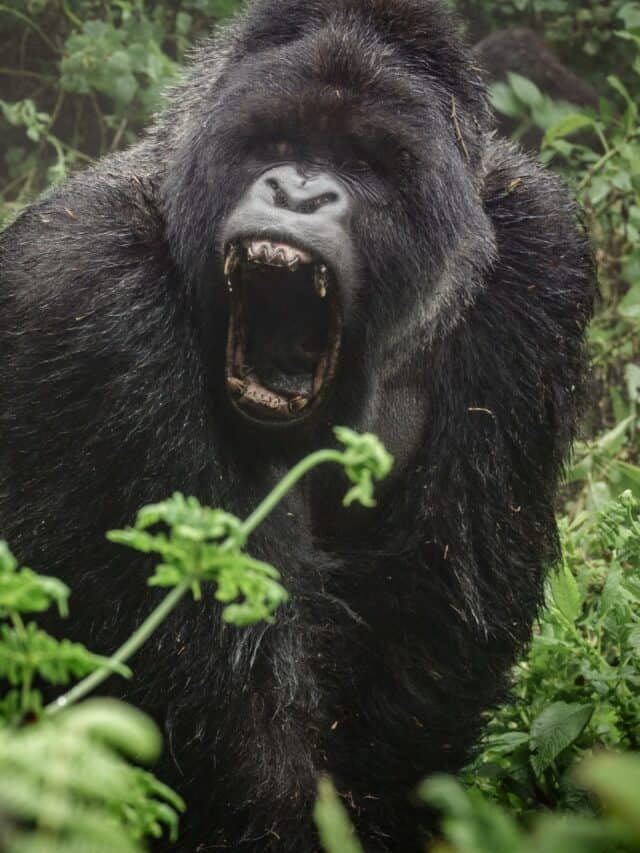
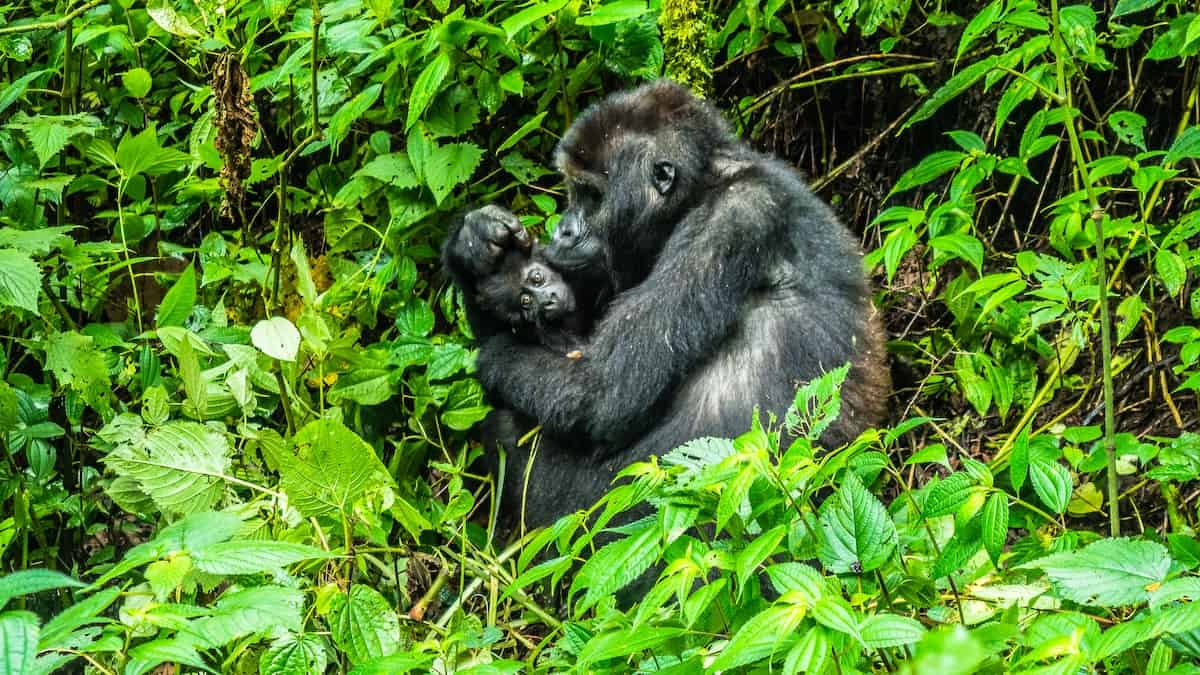
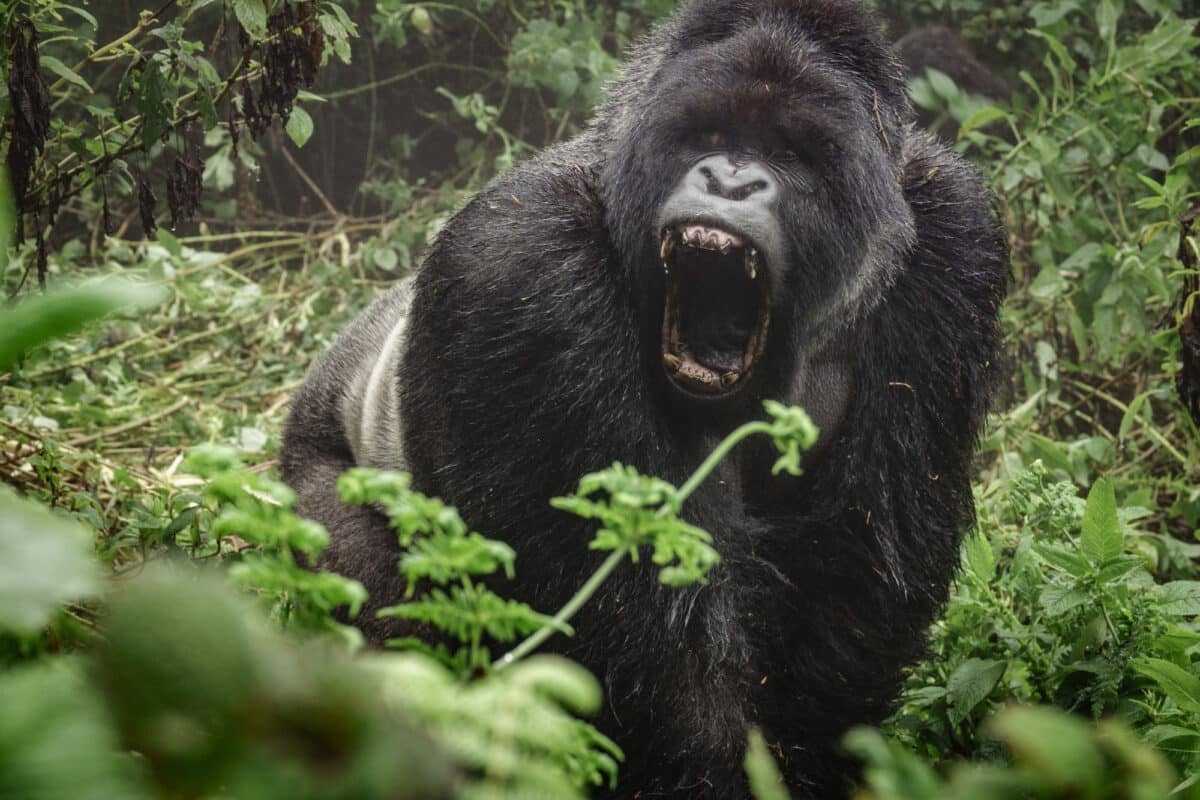
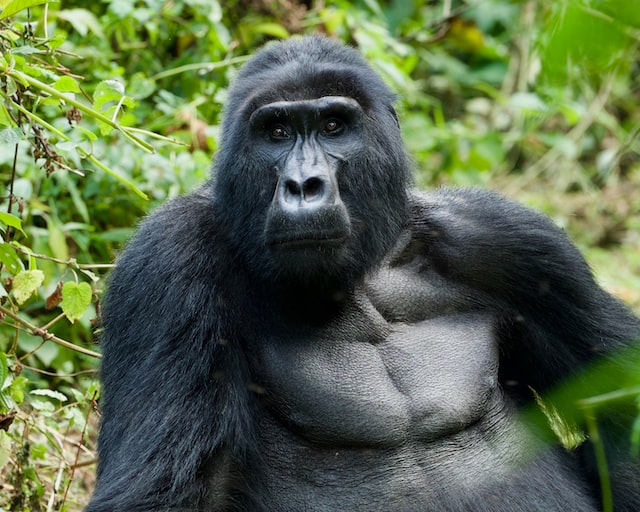
Gorilla History & Cultural Importance
For centuries, local African tribes have respected gorillas. They believed that they were powerful ancestors or spirits of the forest. In more modern times, gorillas have been featured in literature and media. In 1933, King Kong first premiered. This story touched on themes of exploitation and misunderstanding. Today gorillas serve as a flagship species for conservation.
Gorilla FAQ
Gorillas can live around 40 years in the wild, and even longer in captivity.
Gorillas have been observed using sticks to determine water depth when moving through swamps. Additionally, some gorillas have been seen using leaves, sponges, or cups to collect and drink water. They are extremely intelligent, as I mentioned earlier, and they share 98% of the same genes as we do! One gorilla, Koko, was taught sign language and used human-made objects to communicate with her caregivers.
Gorillas will only show aggression when they feel threatened. The leader of the group might show aggression if they feel the need to protect their group.
Learn More About Gorillas Here
Jump to our dedicated Primates page to explore other fascinating animals in this group!
Newest Category: Gorillas
- The Bond Between a Wild Baby Bison and Her Rescuer - July 20, 2024
- An Excited Husky’s First Ever Time in Snow - July 20, 2024
- Top 20 Colorful Species To Brighten Your Day - July 14, 2024

